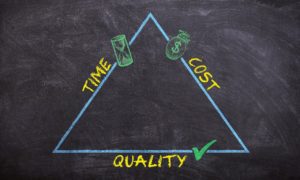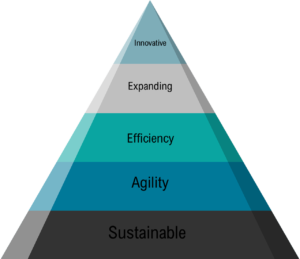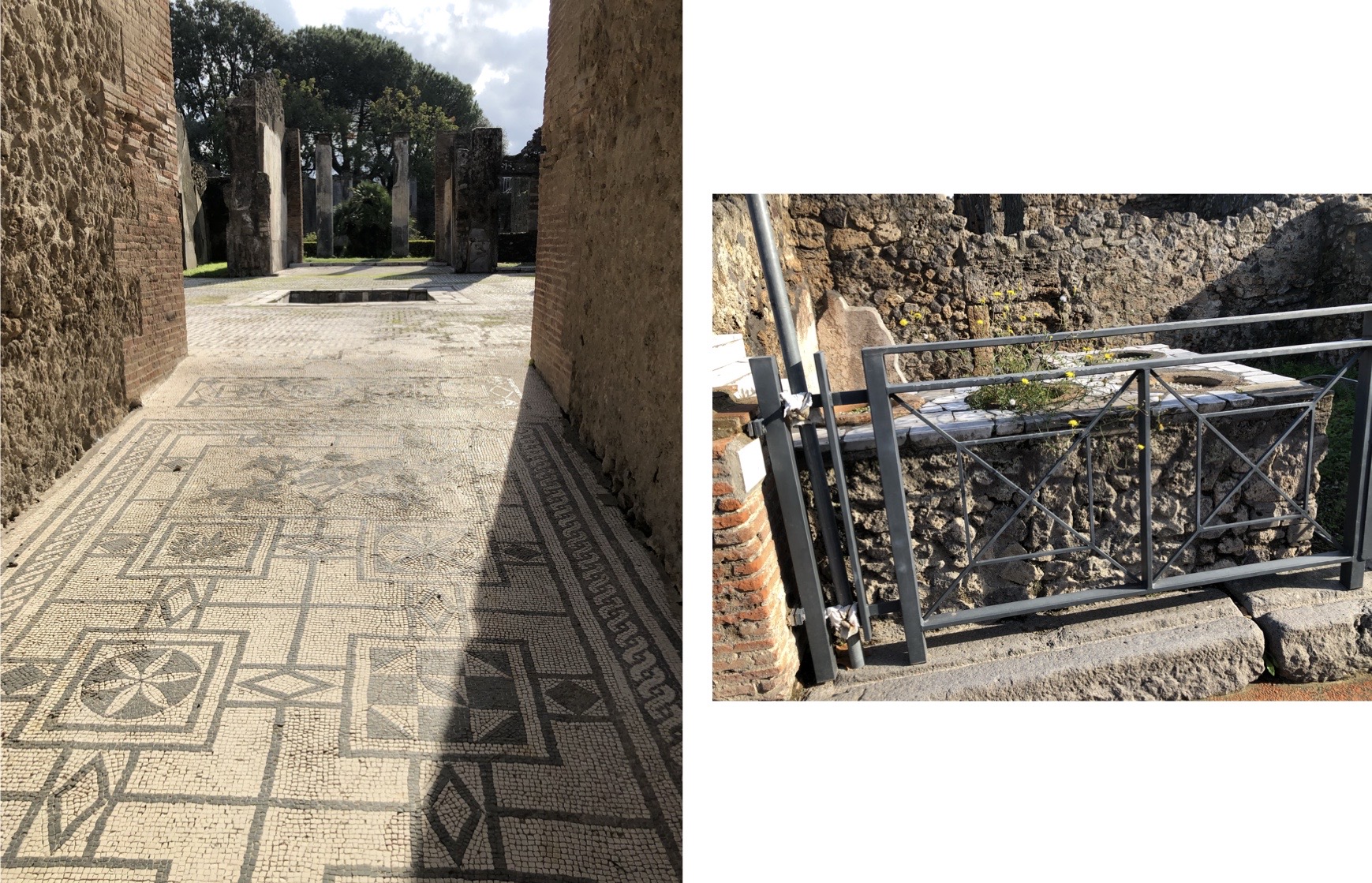Legion Chronicles
Four reasons why you shouldn’t delay decision making

And yet, for some reason, some of us tend to hold off on making that definitive choice. Whether in business or our personal lives, we all defer making decisions from time to time. It could be because you are afraid of what might happen, you figure you can hold off a bit longer, you are waiting for things to change first, or other times it’s easier to do nothing. Sometimes, you just want to stand by and see which way the wind blows before you make a move. Other times, you just avoid deciding altogether.
Now, I’m not saying that holding off on a decision is always wrong. Sometimes, it gives you more time to gather information and think about your next step. What is important is you don’t linger too long in indecision. Not making a decision is a decision, and it always has a consequence. That consequence might be use of a resource that’s important to you, such as time, money, the effort of your team. Or the cost could be an increase in something that you otherwise want to keep low, like stress or working outside business hours. The cost could also be opportunity and not being in a position to take advantage of one.
It’s my firm belief that it’s better to regret something you have done than something you haven’t. Time spent lamenting what could have been ‘if only’ is far too familiar and is a waste of time spent doing something productive.
People often defer their decision to return to it later. Something I learned the hard way travelling is if you see something and you like it… BUY IT then and there. I spent many an hour lamenting the best thing ever found on tour, then sold out after I went away to think about it. Anyone trying to buy a house now can’t afford to think about it and come back – it will be sold. The same goes for experiences. If there’s something you would like to do, make time for it. In the late 1980s, there was a TV ad for a theme park with the line ‘don’t say one day, that day will never come’. Truer words were never spoken.
For businesses, delaying investment in new systems and products isn’t always a great decision (see Counter-intuitive actions in times of crisis). The world is constantly changing; individuals and businesses need to adapt and be in the right position to meet the market’s needs. The cost of not investing in your business can make you irrelevant in the future. Think Blockbuster, Blackberry (although they are making a comeback), and MySpace. These brands were at the top of the food chain, but they were too slow to up their game, and their businesses have gone the way of the caribou – extinct.
Putting off decision making can cost relationships, time, life, or money. While gathering information is critical to making the right decision, you analyse and calculate the risks and then decide. The sooner you choose, the faster you will realise if you have made the right one, leaving time to pivot if required.
So what:
- We have our reasons why we defer making choices, but everything comes with a cost.
- While gathering your options, think about what it would cost if you delay or do nothing.
- If you find that you’re delaying decisions, reflect on what’s behind your reluctance. Not only will you learn something about yourself, but it might help you to develop some strategies to be more decisive.
Your business plan: Is it time for a review and refresh?

In the words of Mike Tyson, “everyone has a plan until you get punched in the face”. For many of us that invested time in planning for 2020 and the financial year or beyond, those plans may not be as relevant as they were six months ago. It might be that the goalposts have been brought closer through reduced activity and revenue, extended through unanticipated demand and growth, or now lie in a totally different place.
If you’re in this boat (which is likely most of us), you’ve got three key choices: (1) continue on with the existing plan, (2) review your goals and priorities, or (3) re-plan your business and value proposition to account for the changes. Each of these options will depend on your current state versus your original plan, your risk appetite, the extent of change, as well as your confidence and outlook. However, you will benefit from taking the time to reassess your plan.
Everything in life and work is so much easier if you know where you’re going, and you’re working towards an achievable target. As humans, we are motivated by outcomes and reaching goals, not from being far away from the desired result or conversely, having nothing tangible on which to focus. This trait is why we tend to break big tasks or goals down into smaller chunks and set more frequent but smaller goals. Adventurers climbing Mt Everest don’t think about spending two months climbing almost 9000km. Instead, their journey is broken down into phases and targets for each day. This approach helps climbers keep up the motivation to reach their goal.
Taking the time to review your business plan alongside current and predicted performance will firstly help you understand your current position. It will also keep you focused on achieving the best possible outcomes. If your results are much better than planned, a reassessment will mean making sure that your stock and processes can cope with increased demand, ensuring that your customers have a smooth experience. If you’re not doing as well as you had hoped, it might be time to revise your targets down. Doing so can decrease the negativity experienced when comparing the actuals against higher targets and refocus your attention on your expenses.

Legion Consulting has developed a 9-item questionnaire to help you determine whether you should take another look at your goals and plans for the year. Whether you’re concerned about having to shut your doors, or are now positioned to take full advantage of opportunities that have arisen, it’s essential to know how to prepare yourself for the best possible outcome.
So what:
- Current events have and will continue to impact each business differently
- It’s important to continually monitor performance and re-evaluate goals if required
- You can take the questionnaire here
- If you need a guide to help you identify new goals, and develop a practical plan to achieve them, get in touch with Legion Consulting.
How to improve business performance through understanding opportunity cost
There’s a TV show I enjoy called ‘once upon a time’. In this show there is a character, Mr Gold, who’s catchphrase is “all magic comes with a price, dearie”. He’s right, but price tags are on more than just magic; everything comes with a price. That price is the opportunity cost or the ‘cost’ of losing other alternatives when selecting one decision or course of action. This principle is the same for decision making and problem solving in all elements of our lives.
Every single choice we make means that we can’t make an alternate choice using the same time or other resources. Decision making isn’t easy most of the time, and thinking about it in this way can make it even harder, especially when you’re looking for business growth or to improve business performance but there is so much to do. However, having a strategic plan and clear set of goals can help you prioritise what’s most important, evaluate your options and make the choice that represents the best value for the ‘price’ you’re paying by not selecting other options. There are usually at least three elements to a choice; time, cost, and quality. Let’s look at a few examples.
Managing your books takes time and can be frustrating. You can hire a bookkeeper to do this for you; that will cost money, impacting your profit. However doing so will give you back time and it will likely be done faster, given that this work is a bookkeepers expertise. You can spend that time you save doing revenue generating activities, bringing in more revenue, also impacting your profit. The opportunity cost of doing your own books is being able to spend that time generating more revenue. The opportunity cost of hiring a bookkeeper is that you can’t use those funds for anything else.

You can consider any decision in this same way. Firstly, identify your goal and the elements to the decision’s outcome, such as time, cost, quality, and anything else. Then document your options as well as the opportunity cost and how each impacts your chosen components. Finally, review your options and select which will best progress you towards your goals.
So what:
• Everything comes with a price – so be clear on the price you are paying for your choices
• We don’t always have choices, but when we do, evaluate your options and their opportunity cost to make sure you choose wisely
The business ‘hierarchy of needs’
Maslow’s hierarchy of needs, designed back in the 1940s proposes a prioritisation of the things that we humans need. The basic requirements we need to live are those that satisfy our physiological needs; food, water, warmth and rest. Without these things, we (and most living things) will die. Only if we have these things can we move up a slot and start focusing on the next level of needs, which is safety and security. Once these two basic needs are taken care of, we will seek out the following levels of belongingness and love, then self-esteem. Finally, once all that is taken care of, we will seek out self-actualisation, focused on achieving our full potential as human beings and individuals.
Just humans have a hierarchy of needs that we instinctively look to meet in sequential order; businesses too have progressive levels of needs.

- Sustainable – need the basics taken care of so you can operate. Funds, a relevant product or service value proposition, and a good plan to help you focus your efforts is what you need.
- Agile – things don’t always go to plan, so once you’ve got your basics in place, the next step is to build agility, which means being able to manoeuvre around obstacles and keep going. Building this flexibility usually means a more sophisticated plan with some inbuilt contingency.
- Efficiency – you’ve grown bigger, you’ve got a strong base, and you’re confident that you can deal with challenges. Step three is to start looking for ways to make your customers lives, as well as you and your team’s lives better through efficiency. An operational review is a beneficial way to identify both needs and opportunities to make processes faster, easier, and less risky.
- Expanding – since you’ve saved yourself some time and money, it’s time to start thinking about new geographies or markets for your products, or improvements to your proposition.
- Innovative – you’ve got a solid foundation under you, so it’s time to think about how your business can come into its own and do something new. Innovation requires having addressed all of the lower ‘levels’. Funds will need to keep coming in the door to pay for what you want to do. Being agile will help with testing and any adjustments. You’ll need to be efficient with the effort you’re putting into the design, build and also the processes involved, especially once the changes become business as usual. Innovation doesn’t have to be revolutionary, and it doesn’t have to be a product or service. A new or adjusted structure or business model can be just as innovative as a new product.
Skipping steps will make things harder in the long run. For example, if you miss ‘efficiency’ and move straight from agility to expanding, you might find that your processes become burdensome as you get bigger. You’ll end up with lots of band-aids and workarounds that will eventually collapse. Similarly, if you stop progression up the hierarchy at innovative and don’t explore ways to understand and change your business, you might find yourself left behind by your customers or the market. These lessons hold true for large companies, small businesses and everything in between, both commercial and non-profit. In my twenty-odd years of experience, I have seen it play over many times in different organisations.
There’s a saying ‘what got you here won’t get you there’ that is relevant in many contexts, including this one. Reaching the top of the pyramid is not the end of the journey; the process is iterative. As the environment around us changes, staying still is unlikely to serve businesses well. More than ever, we live in a time when life (and work) is defined by a constant cycle of change. Being aware, expectant and prepared to adjust and even transform can help you stay on top of the ‘wave’ that is life in the 21st Century.
So what:
- Does your planning follow an iterative process to help keep you on top of the wave?
- If not, identify where you sit in the hierarchy right now and start thinking about the next level. Depending on how large your business is, you might have multiple current places based on your customer value propositions.
Getting the most value from your future-focused team discussions

Getting the team together for strategic conversations (including team development, strategic review, planning, problem-solving or other events) involves cost. There’s the cost of actually bringing people together, where there’s transport, accommodation, catering or meeting room hires involved. Then there’s the opportunity cost of bringing everyone together; the value lost from what those individuals have not been able to work on or deliver their business-as-usual activities while participating in the discussion. So you need to get the most out of your time together; sufficient value for the cost expended.
Many leaders and businesses, especially in small businesses, run and chair their strategic discussions in-house or by themselves; facilitators are an additional expense for your already costly event. There are a few reasons why you might be missing out on value by running a planning event yourself. Firstly, when you’re engaged in a discussion, it’s harder to coordinate and think ahead to where it needs to go. It can be hard to challenge ideas and individuals in a productive way when you are intimately involved. Thirdly, you only know what you know. Bringing in fresh eyes and outside expertise can lead you and your team to places and conclusions beyond what you expected.
Facilitation means making something easier or making it happen; that’s exactly what professional facilitators do. So while the additional time and expense of a facilitator for your strategic events might seem like an unnecessary expense, I guarantee you’ll end up with better value for your entire investment.
If you would like to explore how an independent facilitator can help increase the value of the investment your team makes in coming together for planning or problem solving, get in touch. We’ll get a Legion on it!
A pinch of optimistic realism and a heaped spoon of contingency planning

Like everyone, in response to COVID-19, I have been involved in lots of meetings and conversations around adjusting what we do, how we do it, and how long we do it for.
Everyone feels uncertain right now, about the health, wellbeing, and livelihood of their family and friends. Our view can change with every update published by the media, including social media. It can be overwhelming and stressful, which can lead to scepticism and mistrust of the messages received. I find most situations are easier to deal with, and problems can be solved by putting on your ‘optimistic realism’ specs.
For me, optimistic realism means having confidence and believing that the best possible outcome will come to pass, but also having an alternate response plan just in case. Your positive mindset will keep you focused on what really matters to you, instead of the panicked ‘fight or flight’ drive to hoard like a doomsday prepper. These things probably include your business as usual activities, goals you’re working towards, your team, and of course, your family and friends.
Your best possible outcome might be that your results or circumstances improve, or it might be that the status quo continues in line with your current plans. You might even want to identify multiple best possible outcomes to put some stretch goals in place and ‘strike while the iron is hot’.
Contingency planning means identifying at least one alternate scenario and developing a plan of action if that particular scenario plays out. It’s a good idea to put as much detail in these plans as you can, especially the early steps, to make it as easy as possible to start implementing if needed.
Optimistic realism is about spending most of your time on the right things. You don’t need to waste time worrying about things that might not happen or get caught out when something unexpected occurs. You’ll be prepared when fortunate or unfortunate events or circumstances happen, and both react and respond faster and in a way that’s going to optimise results for you.
I hear you say ‘but you can’t plan for every single potential thing; nobody would have predicted an almost global shutdown over Coronavirus’, and you’re right. We can however plan for the impact that events or circumstances may have, for example, a 50% reduction in revenue, shrinking of supply chains, a dramatic increase in the demand and consequent load on delivery services, or the inability to get out to family or friends. These impacts can occur in response to lots of different internal and external events.
The good news is that optimistic realism can apply to any situation; your business, career, family, or other personal elements of your life. So next time you’re planning your priorities and goals, spend a bit of time looking through an optimistic realism lens. That way if the unexpected happens, you’ll be able to keep focused on what matters, and pull out something you prepared earlier.
So what:
- Next time you’re reviewing or working on your business plan, identify a few alternate possibilities and develop your response.
- Make sure you have alternates for both favourable and non-favourable possibilities.
- Get in touch if you would like some Legionary help with your planning.
Lessons from Pompei: Get the most out of your resources

In December last year I was lucky to visit Pompei and take a tour of the ruins, which have left us with an excellent record of the lives of the town’s residents up to the time of AD79, when Mt Vesuvius erupted. During the tour it became clear that those that were fortunate to have a large home made the very most of the space to maximise their comfort and enjoyment. There were two things I observed from these ancient lives that lead to great questions for us to consider.
Most large houses, or villas, in Pompei had kitchens, bedrooms, and gardens, just as we do today. However, there were other features of the homes that aimed to squeeze the most value out of every inch of floor space. Firstly, at the front street-facing corners, on either side of the front entrance passage (see image below left) were small shops, leased to local folks to sell their wares. Many of these stores sold ‘fast food’ like baked cheese and cooked fish, bread, olives, or wine (like the photograph below on the right), but others sold pots and pans, textiles and pretty much anything else residents needed. Shopkeepers paid rent for their space to the home owners, providing a much more rewarding use for the space on either side of the entrance that had no other function.

Houses also had a rainwater basin as part of the atrium, which collected valuable water as rain fell. The water moved through various rooms in the house via internal pipes and guttering, through to a cistern where it could be easily accessed for the household. As an added benefit, water that flowed through the rooms kept the space cool. This further demonstrates the efficient use of the space to collect a valuable resource (water) and cool rooms.

So what:
- How well are you using your resources?
- Do you have any unused space or other under-utilised resource (including people) that could be used for an alternative or an additional purpose?
- How well do you collect, store, access and use important resources, such as data?
- Are you getting the best value out of all your resources?

Performance focused routines
Legionaries followed a strict daily routine set by their commander to maintain order in the Castra (camp), keep the army battle ready, and enforce discipline. There were three key elements to the daily routine; hygiene activities, exercise, and training. This routine ensured that all soldiers were ready for now, next, and later.
Hygiene activities included the things needed to keep the camp and the legionaries’ bodies and lives functioning on a day-to-day basis, like allocated chores, eating and sleeping; the ‘now’. Exercise kept the soldiers fit and ready to execute campaigns for tomorrow; the ‘next’. These two things contribute to maintenance of the status quo – the minimum required to keep a place on the team. However to be a truly great army, the team needed to do more than just maintain current state. They needed to be prepared for the future and the unexpected; the ‘later’.
Legion commanders recognised the need to increase the skill level of their people to improve both their ability and agility. Soldiers trained every day in full armour in different terrains and times to give them an edge over those that didn’t work hard to improve their skills.
It was important to do all three of these activities every day to build habit and discipline, keeping each soldier in the best condition for great performance, now, next, and later.
The same requirement for set routines can help make businesses more effective and efficient, for the now, next, and later. There are hygiene, exercise, and training activities that will deliver just that. Hygiene activities make sure you’re looking after the here and now and that you’ve got a clean house. These activities might include servicing customers, maintaining websites, or making sure you’ve got enough stock.
Exercise helps you keep fit to stay in the game and gives you a ticket to play – keeping up with trends so you can offer new products or services that help you stay relevant.
The third level of routine is training for ‘later’, helping you get stronger and keep an eye on the broader view. These activities might include developing an understanding of and capabilities in emerging technologies, markets, or other arenas.
So what:
- Does your organisation’s routine include hygiene, exercise, and training; all three levels of activity?
- If not, identify what’s missing and introduce some small steps to help you be ready for now, next, and later.

Essential equilibrium
Last year I was in New York City and had the good fortune to join a ‘vertical’ tour of the Cathedral of St John the Divine. During the tour, the guide talked about the importance of balance and equilibrium architecturally and theologically, which really got me thinking.
Equilibrium results when mutually opposing forces meet and balance.
The tour guide at the Cathedral talked about architectural and theological balance. The former provides stability and aesthetic benefits. Without design balance, a structure wouldn’t stand for long and would undoubtedly create unease for the OCD among us who feel uneasy with the non-symmetrical.
Likewise, good and evil, God and the Devil, angels and demons all are inherent in theological equilibrium. These opposing forces are considered essential for spiritual balance.
The concept of equilibrium is shared in many other contexts. Dietary fats have been demonised over the last 40 years, with a multitude of low fat foods now available on supermarket shelves. Everyone knows salads are good for you – healthy. However without a fat source (oil in dressing, avocado, or a nice bit of feta cheese), our bodies can’t absorb the good nutrients effectively. Healthy and fatty foods thus come together as mutually opposing forces to create optimum nutrient absorption.

Everyone knows stress is bad for you; however it is often an essential ingredient to getting great results. In the workplace, stress helps to drive action so that you can achieve your goals. Similarly, exercise can be stressful on our bodies, but without this form of physical stress, our muscles would not strengthen, they would atrophy.
If creativity is one of the best things about being human, then the reality of constraints is one of the worst. Most of us don’t like constraints, but the equilibrium between creativity and constraint often brings the best results. As David Bowie sang in Modern Love (1983): “I know when to go out / Know when to stay in / Get things done.”
In its most basic form, many of us will have experienced the creativity vs constraints phenomenon when preparing a meal based only on the ingredients available in our fridge or pantry. This exact situation led to the creation of one of my favourite sandwiches – cottage cheese and beetroot.
So what?
- What are the mutually opposing forces that create balance and equilibrium for you?
- Do you respect and value opposing forces?
- Is each force present in appropriate proportion? If not, what can you do to rebalance and achieve a desirable equilibrium in your life?
